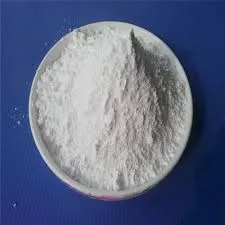Understanding Pentoxifylline 400 mg Uses, Benefits, and Considerations
Pentoxifylline is a xanthine derivative that plays a crucial role in enhancing blood flow and reducing blood viscosity, thus improving the oxygenation of tissues. With a standard dosage of 400 mg, it is commonly prescribed for various medical conditions, primarily those related to poor blood circulation. This article delves into the uses, benefits, and important considerations regarding pentoxifylline.
Uses of Pentoxifylline
The primary indication for pentoxifylline is chronic peripheral vascular disease, particularly in patients suffering from intermittent claudication, a condition marked by pain and cramping in the legs due to inadequate blood flow during physical activity. By improving the flexibility of red blood cells and decreasing platelet aggregation, pentoxifylline helps alleviate the symptoms associated with this condition, allowing individuals to engage in activities with less discomfort.
In addition to peripheral artery disease, pentoxifylline is also used in the management of diabetic foot ulcers and other wounds that do not heal properly. Its ability to enhance microcirculation and promote oxygen delivery to tissues makes it a valuable option in wound care. Moreover, pentoxifylline has anti-inflammatory properties, which further aid in the healing process by reducing inflammation around the affected areas.
Benefits of Pentoxifylline
1. Enhanced Circulation The most notable benefit of pentoxifylline is its ability to improve blood flow. This can significantly enhance the quality of life for patients with circulation-related issues.
2. Pain Relief By alleviating symptoms of intermittent claudication, patients are able to walk longer distances without pain, improving their mobility and overall physical fitness.
pentoxifylline 400 mg

3. Wound Healing The drug's role in promoting tissue oxygenation and reducing inflammation can expedite the healing of chronic wounds, making it particularly beneficial for diabetic patients and those with vascular disorders.
4. Safety and Tolerability Pentoxifylline is generally well-tolerated, with a lower risk of severe side effects compared to other medications used for similar purposes.
Considerations and Side Effects
While pentoxifylline is beneficial for many patients, it is not suitable for everyone. Certain individuals, such as those with a history of heart problems or those who are pregnant, should exercise caution. Additionally, its use should be avoided in patients with active bleeding disorders due to the medication's impact on platelet function.
Common side effects include gastrointestinal disturbances such as nausea, vomiting, and diarrhea, as well as dizziness and headache. Most side effects are mild and can be managed effectively. However, if more severe reactions occur, such as allergic reactions, it is crucial to seek medical attention promptly.
Conclusion
In summary, pentoxifylline 400 mg is a valuable tool in the management of conditions associated with poor blood circulation, particularly in patients experiencing intermittent claudication and chronic wounds. Its ability to enhance blood flow, promote healing, and provide pain relief underscores its significance in clinical settings. As with any medication, careful consideration of the patient's health history and potential side effects is important. When used appropriately, pentoxifylline can significantly improve the quality of life for those living with circulation-related challenges, making it a noteworthy option for both healthcare providers and patients alike. Always consult with a healthcare professional before starting any new treatment to ensure it is the right choice for you.

